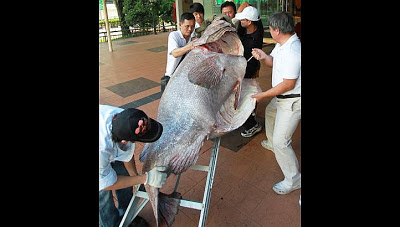Channel NewsAsia 12 Jun 13;
SINGAPORE: Monkeys have been making headlines for behaving badly and the Agri-Food & Veterinary Authority (AVA) is working with NParks to study the feasibility of sterilisation as a long-term measure to manage the monkey population.
The furry critters have been making their presence felt in some neighbourhoods by helping themselves to food from kitchens and from unsecured dustbins.
Residents in Old Upper Thomson Road, having lived alongside monkeys for years, have become used to them.
Ng Tien Chung, a resident living in the area, said: "I see monkeys every day and I have no problems with them whatsoever. We are just a few metres away from the forest and it is a nature reserve so the monkeys are entitled to be here. Right now, the immediate thing is, we do not have monkey-proofed bins. That will go a great way to solving the problem. Removal of fruit from prayer altars would be another great step."
Another resident, Jacqueline Marshall, said: "Well, I wish something could be done about them because they seem to have multiplied since we have lived here. My first experience was when they came inside my kitchen and took some candy, and quickly shot out and proceeded to open and eat the candy. They have been next door, taken eggs, taken the inhaler, and they have been seen with Tiger beer cans."
Casuarina Curry owner Subramaniam Ramanan has taken an innovative approach to stop the monkeys from disrupting his business.
"Once or twice they come inside my shop and sometimes they sit inside. We have to chase (them away). Other times, they snatch when people buy our takeaways. Sometimes they disturb the dustbins, take out all the rubbish and throw it out. We closed the dustbins and tie it with a string. That is how we make sure we don't leave food for them."
Shops located near the forested areas have taken steps to keep the bolder monkeys out. This means making sure food items like bread, biscuits, and bananas are kept in display cases and away from open windows.
The AVA said that between January and April this year, it received 516 complaints and feedback about monkeys.
In 2012, the total number of complaints and feedback was 922, and in 2011 it was 729.
On June 9, monkey nuisance was highlighted as an issue faced by some residents living within Jurong GRC - in condominiums near the Bukit Timah Nature Reserve.
Animal rights group ACRES was invited to give its input by a taskforce formed to tackle the problem there.
Instead of trapping the monkeys, animal welfare activists say electric-fencing the perimeter of a property could be a way to keep them out.
Currently, AVA conducts trapping operations in response to monkey nuisance complaints and threats to personal safety from residents of condominiums and commercial establishments.
AVA said it works with relevant organisations to relocate monkeys which are rounded up in trapping operations.
"However, as relocation options are limited, most will eventually be humanely euthanised," said a spokesman, adding that AVA works with relevant agencies to educate the public on preventing monkey nuisance.
Louis Ng, executive director of ACRES, SAID: "I think the general consensus is that the residents don't want the monkeys killed. At the same time they don't want this problem as well of monkeys raiding their houses. I think people obviously get a bit alarmed when we say electric fencing, but bear in mind this is a non-lethal option. So when a monkey touches it, the monkey doesn't die. When we as humans touch it, and I've touched it before, you don't get burnt. You get a bit of a shock but you don't die from it. And obviously, you have to put signs up that there's electric fencing there."
Mr Ng added that electric-fencing is already done in countries like South Africa to prevent wildlife from entering the property and suggested that the electric fence approach should be paired with monkey-proofed dustbins and stepped-up enforcement for those who insist on feeding these animals.
"With the human-macaque conflict that we're looking at now, we need to look at the root of the problem. The root of the problem is that now there is a food source for monkeys that is away from the forest. They realise now they can raid our bins to get food from there, it is easy food. Second thing is, people have been feeding them, so we've altered the monkey's behaviour quite significantly," said Mr Ng.
AVA also noted that the public can play an important role in preventing monkey nuisance. It said that residents should deny monkeys of potential food sources by keeping food out of sight and practicing good refuse management, such as the double knotting of garbage bags and disposing of garbage in bins with secured lids.
- CNA/fa
Read more!







